Archetypes Across Culture and Advertising and Myth
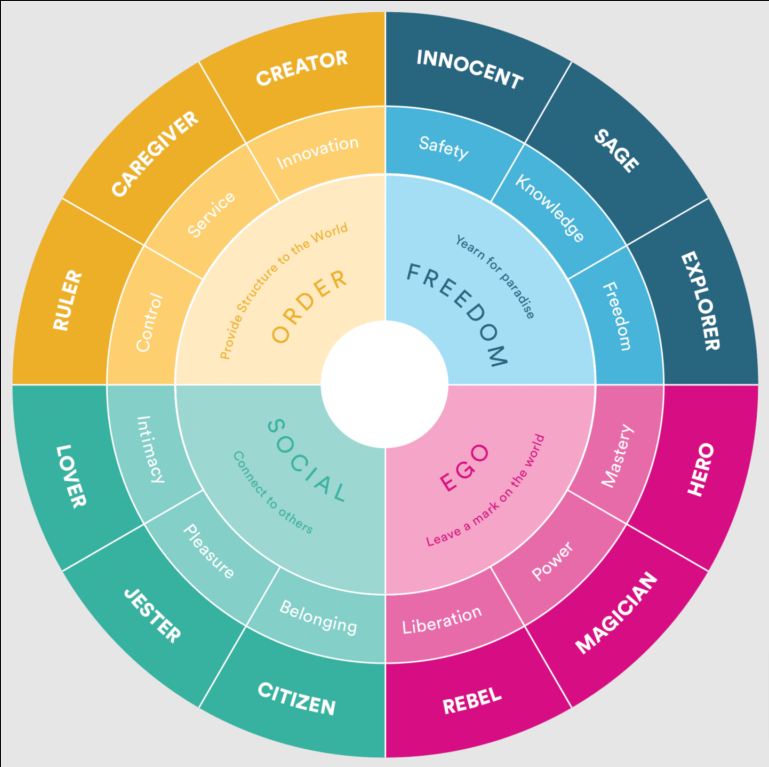 The concept of archetypes, as popularized by psychologist Carl Jung, has found its way into various aspects of our lives, from the way we consume products to how we vote and even how we navigate our romantic relationships. In her book “Awakening the Heroes Within,” Carol Pearson introduces a model of 12 archetypes that have become widely recognized in popular culture. These archetypes are: The Innocent, The Lover, The Orphan, The Creator, The Hero, The Jester, The Caregiver, The Sage, The Explorer, The Magician, The Rebel, and The Ruler. By understanding how these archetypes are used in advertising, politics, and relationships, we can gain a deeper insight into how they influence our unconscious minds and shape our behaviors.
The concept of archetypes, as popularized by psychologist Carl Jung, has found its way into various aspects of our lives, from the way we consume products to how we vote and even how we navigate our romantic relationships. In her book “Awakening the Heroes Within,” Carol Pearson introduces a model of 12 archetypes that have become widely recognized in popular culture. These archetypes are: The Innocent, The Lover, The Orphan, The Creator, The Hero, The Jester, The Caregiver, The Sage, The Explorer, The Magician, The Rebel, and The Ruler. By understanding how these archetypes are used in advertising, politics, and relationships, we can gain a deeper insight into how they influence our unconscious minds and shape our behaviors.
Archetypes in Advertising:
Advertisers have long understood the power of archetypes in tapping into our unconscious desires and motivations. By using archetypal imagery and narratives, they can create a strong emotional connection with consumers and influence their purchasing decisions. For example, the Innocent archetype is often used in advertising to evoke feelings of purity, simplicity, and nostalgia. Brands like Coca-Cola and Dove have successfully employed this archetype to create a sense of wholesome goodness around their products.
On the other hand, the Rebel archetype is frequently used to appeal to consumers’ desire for individuality and non-conformity. Brands like Apple and Harley-Davidson have built their identities around this archetype, encouraging customers to “think different” or embrace their inner wild child.
The Lover archetype is another popular choice in advertising, particularly for products related to beauty, fashion, and luxury. Brands like Chanel and Victoria’s Secret use this archetype to evoke feelings of passion, sensuality, and romance, promising consumers a taste of the glamorous life.
Archetypes in Politics:
In the political arena, archetypes are often used to shape public perception and garner support for candidates or causes. The Hero archetype, with its associations of courage, leadership, and self-sacrifice, is a common choice for political figures seeking to project an image of strength and integrity. Politicians like John F. Kennedy and Martin Luther King Jr. embodied this archetype in their public personas and rhetoric.
The Caregiver archetype, with its emphasis on compassion, nurturing, and protection, is another popular choice in politics, particularly for candidates seeking to appeal to voters’ concerns about social welfare and the common good. Politicians like Jimmy Carter and Bernie Sanders have tapped into this archetype in their campaigns and policy positions.
On the other hand, the Ruler archetype, with its associations of power, authority, and control, can be used to project an image of strong leadership and decisiveness. Politicians like Margaret Thatcher and Vladimir Putin have embodied this archetype in their public personas and governing styles.
Archetypes in Relationships:
Archetypes also play a significant role in our romantic relationships, shaping our expectations, behaviors, and interactions with partners. The Lover archetype, with its emphasis on passion, intimacy, and emotional connection, is often at the forefront of romantic relationships. However, when taken to an extreme, this archetype can lead to codependency, jealousy, and a loss of personal identity.
The Orphan archetype, with its associations of abandonment, victimization, and self-pity, can also manifest in relationships, particularly for individuals with unresolved childhood wounds. This archetype can lead to a pattern of seeking out partners who will “rescue” or “complete” them, rather than taking responsibility for their own happiness and growth.
The Magician archetype, with its emphasis on transformation, power, and control, can also play out in relationships, particularly in the form of mind games and manipulation. Partners who embody this archetype may use their charisma and intellect to gain the upper hand in the relationship, leaving the other person feeling confused and disempowered.
The Games People Play: In his book “The Games People Play,” psychologist Eric Berne explores how individuals engage in psychological games based on their unconscious patterns and desires. These games often involve the interplay of archetypes, with each person taking on a specific role in the dynamic. For example, in the game of “Why Don’t You/Yes But,” one partner takes on the role of the Sage, offering advice and solutions, while the other plays the part of the Orphan, finding reasons to reject or dismiss the advice.
Another common game is “Now I’ve Got You,” in which one partner takes on the role of the Ruler or the Rebel, seeking to control or undermine the other through criticism, blame, or manipulation. The other partner may respond by playing the part of the Victim, the Caregiver, or the Hero, either submitting to the abuse or attempting to rescue or defend themselves.
By recognizing these archetypal patterns and games, individuals can begin to break free from dysfunctional relationship dynamics and cultivate more authentic and fulfilling connections.
The 12 archetypes identified by Carol Pearson provide a powerful lens through which to understand the unconscious forces that shape our lives as consumers, voters, and romantic partners. By recognizing how these archetypes are used in advertising, politics, and relationships, we can develop a greater awareness of our own motivations and behaviors, as well as the ways in which we may be influenced or manipulated by others.
Through the process of therapy, individuals can learn to identify and work with their dominant archetypes, embracing their positive qualities while also acknowledging and integrating their shadow aspects. By doing so, they can cultivate a greater sense of self-awareness, authenticity, and empowerment, both in their personal lives and in their interactions with the wider world.
Ultimately, the 12 archetypes remind us of the rich complexity of the human experience, and the ways in which our stories, myths, and symbols continue to shape our individual and collective journeys. By engaging with these archetypes consciously and creatively, we can tap into a deeper source of meaning, purpose, and connection, and navigate the challenges and opportunities of life with greater wisdom, resilience, and grace.
What are the 12 Archetypes:
The Innocent
Explanation: The Innocent archetype represents purity, goodness, and a belief in the possibility of a better world. It embodies a childlike sense of wonder and optimism.
Brand Archetype: The Innocent brand archetype is often associated with products or services that promote simplicity, nostalgia, or a sense of wholesome goodness, such as Coca-Cola or Dove.
The Orphan
Explanation: The Orphan archetype represents a sense of abandonment, loneliness, and the search for belonging. It often involves a journey of self-discovery and the development of resilience in the face of adversity.
Brand Archetype: The Orphan brand archetype is not commonly used in marketing, as it may evoke feelings of vulnerability or victimization.
The Hero
Explanation: The Hero archetype represents courage, determination, and the ability to overcome obstacles and achieve success. It often involves a quest or a journey towards a higher purpose.
Brand Archetype: The Hero brand archetype is often associated with products or services that promote strength, achievement, or the ability to overcome challenges, such as Nike or the U.S. Army.
The Caregiver
Explanation: The Caregiver archetype represents compassion, nurturing, and the desire to help and support others. It often involves a sense of selflessness and a willingness to put others’ needs before one’s own.
Brand Archetype: The Caregiver brand archetype is often associated with products or services that promote care, protection, or assistance, such as Johnson & Johnson or UNICEF.
The Explorer
Explanation: The Explorer archetype represents a sense of adventure, curiosity, and the desire to discover new things and experiences. It often involves a willingness to take risks and step outside of one’s comfort zone.
Brand Archetype: The Explorer brand archetype is often associated with products or services that promote travel, adventure, or new experiences, such as Jeep or The North Face.
The Rebel
Explanation: The Rebel archetype represents a sense of nonconformity, independence, and the desire to challenge the status quo. It often involves a willingness to stand up for one’s beliefs and values, even in the face of opposition.
Brand Archetype: The Rebel brand archetype is often associated with products or services that promote individuality, edginess, or a sense of counterculture, such as Harley-Davidson or Virgin.
The Lover
Explanation: The Lover archetype represents passion, intimacy, and the desire for connection and relationship. It often involves a sense of appreciation for beauty, sensuality, and the pleasures of life.
Brand Archetype: The Lover brand archetype is often associated with products or services that promote romance, luxury, or indulgence, such as Chanel or Godiva.
The Creator
Explanation: The Creator archetype represents innovation, imagination, and the desire to bring new things into being. It often involves a sense of originality, vision, and the willingness to take creative risks.
Brand Archetype: The Creator brand archetype is often associated with products or services that promote creativity, artistry, or self-expression, such as Apple or Lego.
The Jester
Explanation: The Jester archetype represents humor, playfulness, and the desire to bring joy and levity to others. It often involves a sense of spontaneity, irreverence, and the ability to find the funny side of life.
Brand Archetype: The Jester brand archetype is often associated with products or services that promote fun, entertainment, or a sense of lightheartedness, such as Old Spice or Doritos.
The Sage
Explanation: The Sage archetype represents wisdom, knowledge, and the desire to understand the deeper truths of life. It often involves a sense of curiosity, reflection, and the willingness to share one’s insights with others.
Brand Archetype: The Sage brand archetype is often associated with products or services that promote learning, expertise, or personal growth, such as Google or TED.
The Magician
Explanation: The Magician archetype represents transformation, power, and the ability to create change in oneself and others. It often involves a sense of charisma, vision, and the willingness to take risks and push beyond limitations.
Brand Archetype: The Magician brand archetype is often associated with products or services that promote innovation, transformation, or the ability to achieve seemingly impossible results, such as Tesla or Disney.
The Ruler
Explanation: The Ruler archetype represents power, control, and the desire to create order and structure in the world. It often involves a sense of responsibility, leadership, and the willingness to make difficult decisions for the greater good.
Brand Archetype: The Ruler brand archetype is often associated with products or services that promote prestige, exclusivity, or a sense of authority and leadership, such as Mercedes-Benz or Rolex.
These archetypes provide a framework for understanding the universal patterns of human behavior and motivation, and how they can be applied in the context of branding and marketing. By aligning with a particular archetype, brands can tap into the deep-seated desires and aspirations of their target audience, creating a strong emotional connection and sense of loyalty.
Caroline Myess 80 Archetypes:
Caroline Myss, a renowned author and speaker in the field of human consciousness and spirituality, has developed a unique set of 80 Archetype Cards that offer a fascinating exploration of the diverse aspects of the human experience. These archetypes, which range from the Addict to the Visionary, provide a powerful tool for self-discovery, personal growth, and understanding the complex dynamics of human behavior.
The Archetype Cards as a Tool for Self-Reflection:
Myss’ Archetype Cards are designed to help individuals identify and connect with the archetypal energies that are most active in their lives. By exploring these archetypes, people can gain a deeper understanding of their own motivations, strengths, and challenges, as well as the patterns that may be holding them back from achieving their full potential.
For example, someone who strongly identifies with the Warrior archetype may be driven by a sense of courage, discipline, and the desire to fight for what they believe in. However, they may also struggle with issues of aggression, competitiveness, and a need for control. By recognizing and working with this archetype, the individual can learn to channel their Warrior energy in a more constructive and balanced way.
Similarly, someone who resonates with the Healer archetype may be naturally drawn to caring for others and facilitating their growth and well-being. However, they may also struggle with issues of codependency, self-sacrifice, and a lack of boundaries. By exploring this archetype, the individual can learn to balance their compassion with self-care and healthy limits.
Archetypes in Relationships and Society:
Myss’ Archetype Cards can also provide valuable insights into the dynamics of relationships and social interactions. By understanding the archetypal energies that are at play in a given situation, individuals can navigate conflicts, communicate more effectively, and build stronger, more authentic connections with others.
For example, in a romantic relationship, one partner may embody the Lover archetype, with its emphasis on passion, intimacy, and emotional connection. The other partner may be more strongly influenced by the Saboteur archetype, with its tendencies towards self-doubt, negativity, and undermining behaviors. By recognizing these archetypal patterns, the couple can work to balance their energies and create a more harmonious and supportive partnership.
On a societal level, Myss’ archetypes can help us understand the collective forces that shape our culture and institutions. For instance, the King and Queen archetypes, with their associations of power, authority, and leadership, are often prominent in political and corporate spheres. The Rebel and Visionary archetypes, on the other hand, may be more active in social movements and creative industries, challenging the status quo and pushing for change and innovation.
Integrating Light and Shadow:
One of the key aspects of working with Myss’ Archetype Cards is recognizing that each archetype has both a light and a shadow expression. The light aspect represents the archetype’s positive potential and gifts, while the shadow aspect reflects its distorted or unhealthy manifestations.
For example, the Warrior archetype in its light expression can represent courage, strength, and the ability to stand up for one’s convictions. In its shadow form, however, the Warrior can manifest as aggression, ruthlessness, and a desire for domination. Similarly, the Caregiver archetype in its light aspect can represent compassion, nurturing, and the ability to support others. In its shadow form, it can lead to codependency, enabling behaviors, and a lack of self-care.
By acknowledging and integrating both the light and shadow aspects of the archetypes, individuals can develop a more balanced and authentic expression of these energies in their lives.
Archetypes in Therapy
Myss’ Archetype Cards can be a valuable tool in the therapeutic process, helping clients to gain insight into their patterns of thought, emotion, and behavior. By exploring the archetypes that are most active in their lives, clients can develop a greater sense of self-awareness and identify areas for growth and change.
Therapists can use the Archetype Cards as a starting point for deeper exploration and discussion, helping clients to connect with their inner resources and develop new strategies for coping with challenges and achieving their goals. By integrating the wisdom of the archetypes into the therapeutic process, therapists can support clients in developing a more authentic, empowered, and fulfilling sense of self.
Caroline Myss’ Archetype Cards offer a rich and nuanced framework for understanding the complexities of the human experience. By exploring the 80 archetypes represented in the deck, individuals can gain valuable insights into their own psyche, as well as the dynamics of their relationships and the larger society in which they live.
Through the process of self-reflection, therapy, and personal growth, individuals can learn to integrate the light and shadow aspects of the archetypes, developing a more balanced and authentic expression of these energies in their lives. By doing so, they can tap into a deeper source of wisdom, resilience, and creativity, and navigate the challenges and opportunities of life with greater clarity, purpose, and grace.
Ultimately, Myss’ Archetype Cards remind us of the rich tapestry of human experience, and the ways in which our individual journeys are woven together in the larger story of our collective evolution. By engaging with these archetypes consciously and compassionately, we can contribute to the healing and transformation of ourselves, our relationships, and our world.
Are There Historical Precedents to the Archetypes?
The Historical Roots of Archetypes: Exploring Tarot, Astrology, and Greek Mythology
Throughout history, humans have sought to understand the mysteries of the universe and the depths of the human psyche. In this quest for meaning and self-discovery, various systems of divination and mythology have emerged, each offering a unique perspective on the archetypal patterns that shape our lives. Among these systems, the tarot, astrology, and Greek mythology stand out as rich sources of archetypal wisdom, providing a glimpse into the collective unconscious and the timeless stories that define the human experience.
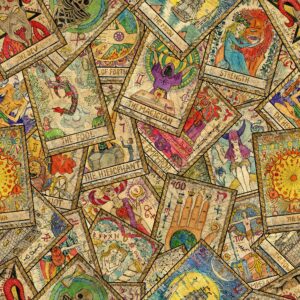 Tarot: A Mirror of the Soul
Tarot: A Mirror of the Soul
The tarot, a deck of 78 cards featuring intricate illustrations and symbolic imagery, has long been regarded as a powerful tool for divination and self-reflection. For renowned psychologist Carl Jung, the tarot represented a fascinating window into the unconscious mind, offering a way to access the archetypal patterns that lay beneath the surface of our everyday lives.
Each of the 78 cards in the tarot deck, particularly the 22 cards of the Major Arcana, represents a distinct archetype or universal human experience. From The Fool, representing innocence and new beginnings, to The World, symbolizing completion and wholeness, the tarot provides a comprehensive map of the human journey, with all its challenges, triumphs, and transformations.
Jung believed that by engaging with the tarot, individuals could tap into the wisdom of the collective unconscious and gain insight into their own psychological processes. By contemplating the archetypal images and meanings of the cards, we can confront our shadows, illuminate our strengths, and navigate the complexities of our inner lives with greater clarity and purpose.
Therapeutic, Religious, and Political Archetypes of the Tarot Major Arcana
1. The Fool
– Therapeutic: The Fool represents the archetype of innocence and new beginnings, encouraging us to embrace life with openness and curiosity.
– Religious: In spiritual contexts, The Fool can symbolize the leap of faith required to embark on a journey of spiritual awakening.
– Political: The Fool can represent the idealism and naivety of youth, as well as the potential for radical change and innovation.
2. The Magician
– Therapeutic: The Magician represents the power of intention and manifestation, reminding us of our ability to shape our lives through our thoughts and actions.
– Religious: In spiritual traditions, The Magician can symbolize the divine power of creation and the ability to channel spiritual energy.
– Political: The Magician can represent the power of rhetoric and persuasion in political contexts, as well as the potential for manipulation and deception.
3. The High Priestess
– Therapeutic: The High Priestess represents the archetype of intuition and inner wisdom, encouraging us to trust our instincts and listen to our inner voice.
– Religious: In spiritual contexts, The High Priestess can symbolize the mystery of the divine feminine and the importance of sacred knowledge.
– Political: The High Priestess can represent the power of secrecy and hidden influence in political spheres, as well as the importance of diplomacy and behind-the-scenes negotiation.
4. The Empress
– Therapeutic: The Empress represents the archetype of nurturing and abundance, reminding us to cultivate self-care and appreciate the beauty of life.
– Religious: In spiritual traditions, The Empress can symbolize the divine mother and the power of creation and fertility.
– Political: The Empress can represent the importance of social welfare and the nurturing of citizens in political contexts, as well as the potential for excess and indulgence.
5. The Emperor
– Therapeutic: The Emperor represents the archetype of structure and authority, encouraging us to take responsibility for our lives and establish healthy boundaries.
– Religious: In spiritual contexts, The Emperor can symbolize the importance of order and hierarchy in religious institutions.
– Political: The Emperor can represent the power of leadership and the importance of strong governance in political spheres, as well as the potential for authoritarianism and oppression.
6. The Hierophant
– Therapeutic: The Hierophant represents the archetype of tradition and conformity, reminding us of the importance of structure and guidance in our lives.
– Religious: In spiritual traditions, The Hierophant can symbolize the role of religious leaders and the importance of spiritual guidance and education.
– Political: The Hierophant can represent the power of established institutions and the importance of preserving traditional values in political contexts.
7. The Lovers
– Therapeutic: The Lovers represent the archetype of partnership and choice, encouraging us to cultivate healthy relationships and make decisions that align with our values.
– Religious: In spiritual contexts, The Lovers can symbolize the union of the individual soul with the divine, as well as the importance of sacred partnerships.
– Political: The Lovers can represent the power of diplomacy and the importance of cooperation and compromise in political spheres.
8. The Chariot
– Therapeutic: The Chariot represents the archetype of willpower and determination, reminding us of our ability to overcome obstacles and achieve our goals.
– Religious: In spiritual traditions, The Chariot can symbolize the journey of the soul and the importance of self-discipline and control.
– Political: The Chariot can represent the power of leadership and the importance of decisive action in political contexts, as well as the potential for aggression and conquest.
9. Strength
– Therapeutic: Strength represents the archetype of courage and resilience, encouraging us to face our fears and overcome adversity.
– Religious: In spiritual contexts, Strength can symbolize the power of faith and the importance of inner fortitude in the face of challenges.
– Political: Strength can represent the power of perseverance and the importance of standing up for one’s beliefs in political spheres.
10. The Hermit
– Therapeutic: The Hermit represents the archetype of introspection and solitude, reminding us of the importance of self-reflection and inner guidance.
– Religious: In spiritual traditions, The Hermit can symbolize the path of the mystic and the importance of solitary contemplation and meditation.
– Political: The Hermit can represent the power of wisdom and the importance of seeking guidance from elders and experts in political contexts.
11. Wheel of Fortune
– Therapeutic: The Wheel of Fortune represents the archetype of change and cycles, reminding us that life is always in flux and encouraging us to embrace new opportunities.
– Religious: In spiritual contexts, The Wheel of Fortune can symbolize the cyclical nature of existence and the importance of accepting one’s destiny.
– Political: The Wheel of Fortune can represent the power of chance and the importance of adapting to changing circumstances in political spheres.
12. Justice
– Therapeutic: Justice represents the archetype of fairness and balance, encouraging us to seek truth and act with integrity.
– Religious: In spiritual traditions, Justice can symbolize the law of karma and the importance of living in accordance with divine principles.
– Political: Justice can represent the power of the legal system and the importance of upholding the rule of law in political contexts.
13. The Hanged Man
– Therapeutic: The Hanged Man represents the archetype of surrender and letting go, reminding us of the importance of relinquishing control and accepting what is.
– Religious: In spiritual contexts, The Hanged Man can symbolize the path of the martyr and the importance of self-sacrifice for a higher cause.
– Political: The Hanged Man can represent the power of non-violent resistance and the importance of sacrificing personal interests for the greater good in political spheres.
14. Death
– Therapeutic: Death represents the archetype of transformation and endings, encouraging us to embrace change and let go of what no longer serves us.
– Religious: In spiritual traditions, Death can symbolize the cycle of rebirth and the importance of surrendering to the process of spiritual transformation.
– Political: Death can represent the power of revolution and the importance of dismantling outdated systems in political contexts.
15. Temperance
– Therapeutic: Temperance represents the archetype of balance and moderation, reminding us to find harmony in all aspects of our lives.
– Religious: In spiritual contexts, Temperance can symbolize the path of the monk or nun and the importance of living a life of simplicity and devotion.
– Political: Temperance can represent the power of diplomacy and the importance of finding common ground in political spheres.
16. The Devil
– Therapeutic: The Devil represents the archetype of shadow and addiction, encouraging us to confront our darker impulses and break free from destructive patterns.
– Religious: In spiritual traditions, The Devil can symbolize the forces of temptation and the importance of resisting evil influences.
– Political: The Devil can represent the power of corruption and the importance of resisting the lure of power and greed in political contexts.
17. The Tower
Therapeutic: The Tower represents the archetype of upheaval and revelation, reminding us that sometimes we need to experience a breakdown in order to achieve a breakthrough.
– Religious: In spiritual contexts, The Tower can symbolize the path of the prophet and the importance of speaking truth to power, even in the face of opposition.
– Political: The Tower can represent the power of revolution and the importance of dismantling corrupt systems in political spheres.
18. The Star
– Therapeutic: The Star represents the archetype of hope and inspiration, encouraging us to trust in the universe and follow our dreams.
– Religious: In spiritual traditions, The Star can symbolize the light of divine guidance and the importance of having faith in a higher power.
– Political: The Star can represent the power of idealism and the importance of holding onto hope and vision in political contexts.
19. The Moon
– Therapeutic: The Moon represents the archetype of intuition and mystery, reminding us to trust our instincts and embrace the unknown.
– Religious: In spiritual contexts, The Moon can symbolize the power of the divine feminine and the importance of honoring the cycles of nature.
– Political: The Moon can represent the power of emotion and the importance of understanding the public mood in political spheres.
20. The Sun
– Therapeutic: The Sun represents the archetype of vitality and success, encouraging us to embrace our strengths and radiate our light into the world.
– Religious: In spiritual traditions, The Sun can symbolize the power of divine illumination and the importance of living in alignment with one’s highest truth.
– Political: The Sun can represent the power of leadership and the importance of inspiring and uplifting others in political contexts.
21. Judgment
– Therapeutic: Judgment represents the archetype of reckoning and renewal, reminding us that we all must face the consequences of our actions and make amends where necessary.
– Religious: In spiritual contexts, Judgment can symbolize the final accounting of the soul and the importance of living a life of integrity and purpose.
– Political: Judgment can represent the power of accountability and the importance of holding leaders and institutions responsible for their actions in political spheres.
22. The World
– Therapeutic: The World represents the archetype of wholeness and completion, encouraging us to integrate all aspects of our being and find our place in the larger scheme of things.
– Religious: In spiritual traditions, The World can symbolize the ultimate goal of enlightenment and the realization of one’s true nature.
– Political: The World can represent the power of global consciousness and the importance of recognizing our interconnectedness in political contexts.
Astrology: The Cosmos as a Mirror
 Astrology, one of the oldest and most enduring systems of divination, offers another lens through which to explore the archetypes that shape our lives. With its roots in ancient Babylonian and Greek culture, astrology posits that the positions of the celestial bodies at the time of our birth can provide insight into our personality traits, challenges, and life path.
Astrology, one of the oldest and most enduring systems of divination, offers another lens through which to explore the archetypes that shape our lives. With its roots in ancient Babylonian and Greek culture, astrology posits that the positions of the celestial bodies at the time of our birth can provide insight into our personality traits, challenges, and life path.
Central to astrology are the twelve signs of the zodiac, each associated with a particular set of characteristics, elements, and ruling planets. From the fiery passion of Aries to the dreamy intuition of Pisces, each sign represents a unique archetype, a pattern of energy and potential that finds expression in our individual lives.
By understanding the archetypal qualities of our sun sign, as well as the interplay of the other planets in our birth chart, we can gain a deeper appreciation for our own unique strengths, challenges, and opportunities for growth. Astrology invites us to see our lives as part of a larger cosmic dance, a symphony of archetypes playing out against the backdrop of the universe.
Exploring the Therapeutic, Religious, and Political Archetypes of the Zodiac
The twelve signs of the Zodiac represent a rich tapestry of archetypal energies and patterns that shape our personalities, relationships, and experiences. Each sign embodies a unique set of characteristics and potentials that can be explored through the lenses of therapy, spirituality, and even politics. By understanding the therapeutic, religious, and political dimensions of these archetypes, we can gain a deeper appreciation for the role they play in our lives and the world around us.
1. Aries
– Therapeutic: Aries represents the archetype of the warrior, encouraging us to embrace our courage, assertiveness, and independence in the pursuit of our goals.
– Religious: In spiritual contexts, Aries can symbolize the power of divine will and the importance of taking bold action in service of a higher purpose.
– Political: Aries can represent the power of leadership and the importance of taking decisive action in times of crisis or uncertainty.
2. Taurus
– Therapeutic: Taurus represents the archetype of the sensualist, reminding us to find pleasure and comfort in the material world and to cultivate a sense of stability and security.
– Religious: In spiritual traditions, Taurus can symbolize the sacredness of the earth and the importance of honoring the physical body as a temple of the divine.
– Political: Taurus can represent the power of economic stability and the importance of building strong foundations for society.
3. Gemini
– Therapeutic: Gemini represents the archetype of the communicator, encouraging us to express ourselves clearly and authentically and to seek out new ideas and perspectives.
– Religious: In spiritual contexts, Gemini can symbolize the power of language and the importance of spreading wisdom and truth through communication.
– Political: Gemini can represent the power of diplomacy and the importance of building bridges and fostering understanding between different groups and nations.
4. Cancer
– Therapeutic: Cancer represents the archetype of the nurturer, reminding us to cultivate emotional intelligence, empathy, and a sense of belonging with others.
– Religious: In spiritual traditions, Cancer can symbolize the divine mother and the importance of unconditional love and compassion.
– Political: Cancer can represent the power of social welfare and the importance of creating a society that cares for its most vulnerable members.
5. Leo
– Therapeutic: Leo represents the archetype of the creator, encouraging us to express our unique talents and gifts and to radiate our light into the world.
– Religious: In spiritual contexts, Leo can symbolize the power of divine self-expression and the importance of living in alignment with one’s true essence.
– Political: Leo can represent the power of leadership and the importance of inspiring and uplifting others through one’s words and actions.
6. Virgo
– Therapeutic: Virgo represents the archetype of the healer, reminding us to cultivate self-improvement, service, and attention to detail in all that we do.
– Religious: In spiritual traditions, Virgo can symbolize the path of purification and the importance of living a life of integrity and devotion.
– Political: Virgo can represent the power of public service and the importance of creating efficient and effective systems for the betterment of society.
7. Libra
– Therapeutic: Libra represents the archetype of the peacemaker, encouraging us to seek balance, harmony, and justice in our relationships and in the world around us.
– Religious: In spiritual contexts, Libra can symbolize the power of divine justice and the importance of living in accordance with universal principles of fairness and equality.
– Political: Libra can represent the power of diplomacy and the importance of creating a just and equitable society through cooperation and compromise.
8. Scorpio
– Therapeutic: Scorpio represents the archetype of the transformer, reminding us to embrace our shadows, face our deepest fears, and undergo the process of death and rebirth.
– Religious: In spiritual traditions, Scorpio can symbolize the path of the mystic and the importance of surrendering to the transformative power of the divine.
– Political: Scorpio can represent the power of secrets and the importance of uncovering hidden truths and agendas in order to create real change.
9. Sagittarius
– Therapeutic: Sagittarius represents the archetype of the explorer, encouraging us to seek out new horizons, expand our minds, and find meaning and purpose in life’s journey.
– Religious: In spiritual contexts, Sagittarius can symbolize the quest for ultimate truth and the importance of living a life of adventure and discovery.
– Political: Sagittarius can represent the power of vision and the importance of inspiring others to work towards a better future.
10. Capricorn
– Therapeutic: Capricorn represents the archetype of the master, reminding us to take responsibility for our lives, develop self-discipline, and strive for excellence in all that we do.
– Religious: In spiritual traditions, Capricorn can symbolize the path of the initiate and the importance of committing oneself to a life of spiritual mastery.
– Political: Capricorn can represent the power of authority and the importance of creating stable and enduring structures for the benefit of society.
11. Aquarius
– Therapeutic: Aquarius represents the archetype of the revolutionary, encouraging us to think outside the box, challenge the status quo, and work towards a more just and equitable world.
– Religious: In spiritual contexts, Aquarius can symbolize the power of divine knowledge and the importance of using one’s unique gifts to serve the greater good.
– Political: Aquarius can represent the power of social progress and the importance of creating a society that values innovation, equality, and individual freedom.
12. Pisces
– Therapeutic: Pisces represents the archetype of the dreamer, reminding us to cultivate our imagination, intuition, and connection to the divine.
– Religious: In spiritual traditions, Pisces can symbolize the path of the mystic and the importance of surrendering to the flow of the universe.
– Political: Pisces can represent the power of compassion and the importance of creating a society that values empathy, unity, and the interconnectedness of all beings.
Greek Mythology: The Gods as Archetypes
Perhaps no other system of mythology has had as profound an impact on Western culture as the tales of the Greek gods and goddesses. These divine figures, with their all-too-human passions, conflicts, and triumphs, have captured the imagination of artists, writers, and thinkers for centuries, offering a rich tapestry of archetypal themes and symbols.
Each of the Olympian gods and goddesses represents a distinct archetype, a pattern of energy and potential that finds expression in the human experience. From the thundering authority of Zeus to the swift cunning of Hermes, from the fierce independence of Artemis to the sensual allure of Aphrodite, these divine figures embody the full spectrum of human qualities and desires.
By engaging with the myths and stories of the Greek gods, we can gain insight into the archetypal patterns that shape our own lives. We can see ourselves in the jealous rage of Hera, the creative fire of Hephaestus, or the transformative mystery of Dionysus. By understanding the gods as archetypes, we can tap into a deeper understanding of our own psyche and the universal human experiences that connect us all.
The Greek pantheon is a rich tapestry of archetypal energies and patterns that have shaped Western culture for thousands of years. Each deity embodies a unique set of characteristics and potentials that can be explored through the lenses of therapy, spirituality, and politics. By understanding the therapeutic, religious, and political dimensions of these archetypes, we can gain a deeper appreciation for the role they play in our lives and the world around us.
Zeus
Therapeutic: Zeus represents the archetype of the father, encouraging us to embrace our authority, leadership, and responsibility in our personal and professional lives.
Religious: In spiritual contexts, Zeus symbolizes the ultimate source of divine power and the importance of living in alignment with higher principles and values.
Political: Zeus represents the power of governance and the importance of creating just and stable systems of authority.
Hera
Therapeutic: Hera represents the archetype of the wife, reminding us to cultivate loyalty, commitment, and emotional intelligence in our relationships.
Religious: In spiritual traditions, Hera symbolizes the sacredness of marriage and the importance of honoring the divine feminine.
Political: Hera represents the power of alliance and the importance of creating strong and enduring partnerships for the benefit of society.
Poseidon
Therapeutic: Poseidon represents the archetype of the oceanic depths, encouraging us to explore our emotions, intuition, and the mysteries of the unconscious.
Religious: In spiritual contexts, Poseidon symbolizes the power of water and the importance of surrendering to the ebb and flow of life.
Political: Poseidon represents the power of resources and the importance of managing and protecting the natural world.
Demeter
Therapeutic: Demeter represents the archetype of the mother, reminding us to nurture ourselves and others, and to cultivate a sense of abundance and gratitude.
Religious: In spiritual traditions, Demeter symbolizes the cycle of life, death, and rebirth, and the importance of honoring the earth and its bounty.
Political: Demeter represents the power of agriculture and the importance of creating sustainable and equitable systems of food production and distribution.
Ares
Therapeutic: Ares represents the archetype of the warrior, encouraging us to embrace our courage, assertiveness, and passion in the pursuit of our goals.
Religious: In spiritual contexts, Ares symbolizes the power of divine will and the importance of standing up for one’s beliefs and values.
Political: Ares represents the power of military might and the importance of defending one’s territory and interests.
Athena
Therapeutic: Athena represents the archetype of the strategist, reminding us to cultivate wisdom, skill, and self-discipline in all that we do.
Religious: In spiritual traditions, Athena symbolizes the power of divine intelligence and the importance of living a life of purpose and service.
Political: Athena represents the power of diplomacy and the importance of creating wise and effective strategies for the betterment of society.
Apollo
Therapeutic: Apollo represents the archetype of the healer, encouraging us to seek out knowledge, inspiration, and the power of self-expression.
Religious: In spiritual contexts, Apollo symbolizes the power of divine light and the importance of living in alignment with one’s highest truth.
Political: Apollo represents the power of the arts and the importance of creating a society that values beauty, creativity, and personal achievement.
Artemis
Therapeutic: Artemis represents the archetype of the wild woman, reminding us to connect with our primal nature, set boundaries, and protect what we hold dear.
Religious: In spiritual traditions, Artemis symbolizes the power of the divine feminine and the importance of honoring the cycles of nature.
Political: Artemis represents the power of environmental conservation and the importance of creating a society that respects and protects the natural world.
Hephaestus
Therapeutic: Hephaestus represents the archetype of the craftsman, encouraging us to find meaning and purpose through our work and creative endeavors.
Religious: In spiritual contexts, Hephaestus symbolizes the power of divine creation and the importance of using one’s talents in service of the greater good.
Political: Hephaestus represents the power of industry and the importance of creating a society that values skilled labor and innovation.
Aphrodite
Therapeutic: Aphrodite represents the archetype of the lover, reminding us to embrace our sensuality, beauty, and the power of attraction in all its forms.
Religious: In spiritual traditions, Aphrodite symbolizes the power of divine love and the importance of cultivating beauty, pleasure, and harmony in one’s life.
Political: Aphrodite represents the power of diplomacy and the importance of creating a society that values art, culture, and human connection.
Hermes
Therapeutic: Hermes represents the archetype of the messenger, encouraging us to communicate effectively, adapt to change, and find new ways of thinking and being.
Religious: In spiritual contexts, Hermes symbolizes the power of divine communication and the importance of serving as a guide and intermediary between realms.
Political: Hermes represents the power of commerce and the importance of creating a society that values exchange, innovation, and progress.
Dionysius
Therapeutic: Dionysius represents the archetype of the wild man, reminding us to embrace our primal nature, let go of inhibitions, and find ecstasy in the present moment.
Religious: In spiritual traditions, Dionysius symbolizes the power of divine intoxication and the importance of surrendering to the transformative power of altered states.
Political: Dionysius represents the power of revolution and the importance of creating a society that values freedom, creativity, and individual expression.
Hades
Therapeutic: Hades represents the archetype of the underworld, encouraging us to confront our shadows, face our fears, and undergo the process of death and rebirth.
Religious: In spiritual contexts, Hades symbolizes the power of the afterlife and the importance of honoring the ancestors and the mysteries of death.
Political: Hades represents the power of hidden wealth and the importance of creating a society that values the just distribution of resources.
Hypnos
Therapeutic: Hypnos represents the archetype of the dreamer, reminding us to cultivate our imagination, explore our subconscious, and find rest and renewal in sleep.
Religious: In spiritual traditions, Hypnos symbolizes the power of divine inspiration and the importance of seeking guidance from dreams and visions.
Political: Hypnos represents the power of the imagination and the importance of creating a society that values creativity, innovation, and the life of the mind.
Nike
Therapeutic: Nike represents the archetype of the victor, encouraging us to strive for excellence, overcome obstacles, and achieve our goals.
Religious: In spiritual contexts, Nike symbolizes the power of divine victory and the importance of aligning oneself with the will of the gods.
Political: Nike represents the power of success and the importance of creating a society that rewards hard work, determination, and achievement.
Janus
Therapeutic: Janus represents the archetype of the gatekeeper, reminding us to be mindful of transitions, new beginnings, and the dual nature of life.
Religious: In spiritual traditions, Janus symbolizes the power of divine passage and the importance of honoring the thresholds and turning points in one’s life.
Political: Janus represents the power of diplomacy and the importance of creating a society that values cooperation, compromise, and the peaceful resolution of conflicts.
Nemesis
Therapeutic: Nemesis represents the archetype of divine retribution, encouraging us to take responsibility for our actions and face the consequences of our choices.
Religious: In spiritual contexts, Nemesis symbolizes the power of divine justice and the importance of living in accordance with universal laws and principles.
Political: Nemesis represents the power of accountability and the importance of creating a society that values fairness, equality, and the rule of law.
Iris
Therapeutic: Iris represents the archetype of the rainbow, reminding us to find hope, beauty, and inspiration in the midst of life’s challenges and transitions.
Religious: In spiritual traditions, Iris symbolizes the power of divine communication and the importance of serving as a messenger of the gods.
Political: Iris represents the power of diversity and the importance of creating a society that values inclusion, equality, and the celebration of differences.
Hecate
Therapeutic: Hecate represents the archetype of the crone, encouraging us to embrace our inner wisdom, intuition, and the transformative power of the dark.
Religious: In spiritual contexts, Hecate symbolizes the power of magic and the importance of seeking guidance from the unseen realms.
Political: Hecate represents the power of hidden influence and the importance of creating a society that values the wisdom and contributions of elders and marginalized groups.
Tyche
Therapeutic: Tyche represents the archetype of fortune, reminding us to cultivate gratitude, resilience, and the ability to adapt to life’s ups and downs.
Religious: In spiritual traditions, Tyche symbolizes the power of divine providence and the importance of aligning oneself with the flow of the universe.
Political: Tyche represents the power of opportunity and the importance of creating a society that values equal access to resources and the pursuit of happiness.
The Legacy of Archetypal Wisdom
The tarot, astrology, and Greek mythology are just a few examples of the many systems of divination and mythology that have shaped our understanding of the archetypal patterns that underlie human experience. From the hexagrams of the I Ching to the rich pantheons of Hindu and Norse mythology, these ancient wisdom traditions offer a treasure trove of insight and inspiration for those seeking to understand the depths of the human psyche.
By engaging with these archetypal systems, we can tap into a deeper understanding of ourselves and the world around us. We can find guidance and meaning in the challenges we face, and discover new possibilities for growth and transformation. Whether we turn to the tarot for insight, look to the stars for guidance, or find inspiration in the tales of the gods, these ancient wisdom traditions remind us of the timeless patterns that shape our lives and the universal experiences that unite us all.
In a world that often feels fragmented and uncertain, the wisdom of the archetypes offers a path back to wholeness and meaning. By embracing the archetypal patterns that resonate with our own lives, we can tap into a deeper sense of purpose and connection, and navigate the challenges of our lives with greater clarity, resilience, and grace. As we continue to explore the rich tapestry of archetypal wisdom, we can find new ways to illuminate the mysteries of the human experience and connect with the timeless stories that define our shared humanity.
Bibliography
Bolen, Jean Shinoda. Goddesses in Everywoman: Powerful Archetypes in Women’s Lives. Harper Paperbacks, 2004.
Estés, Clarissa Pinkola. Women Who Run With the Wolves: Myths and Stories of the Wild Woman Archetype. Ballantine Books, 1996.
Jung, Carl Gustav. The Archetypes and the Collective Unconscious. Princeton University Press, 1981.
Myss, Caroline. Sacred Contracts: Awakening Your Divine Potential. Harmony, 2002.
Qualls-Corbett, Nancy. The Sacred Prostitute: Eternal Aspect of the Feminine. Inner City Books, 1988.
Woodman, Marion. Addiction to Perfection: The Still Unravished Bride. Inner City Books, 1982.
Further Reading
Campbell, Joseph. Goddesses: Mysteries of the Feminine Divine. New World Library, 2013.
Downing, Christine. The Goddess: Mythological Images of the Feminine. Continuum, 1996.
Murdock, Maureen. The Heroine’s Journey: Woman’s Quest for Wholeness. Shambhala, 1990.
Perera, Sylvia Brinton. Descent to the Goddess: A Way of Initiation for Women. Inner City Books, 1981.
Pinkola Estés, Clarissa. The Dangerous Old Woman: Myths and Stories of the Wise Woman Archetype. Sounds True, 2010.
Woodman, Marion. The Pregnant Virgin: A Process of Psychological Transformation. Inner City Books, 1985.

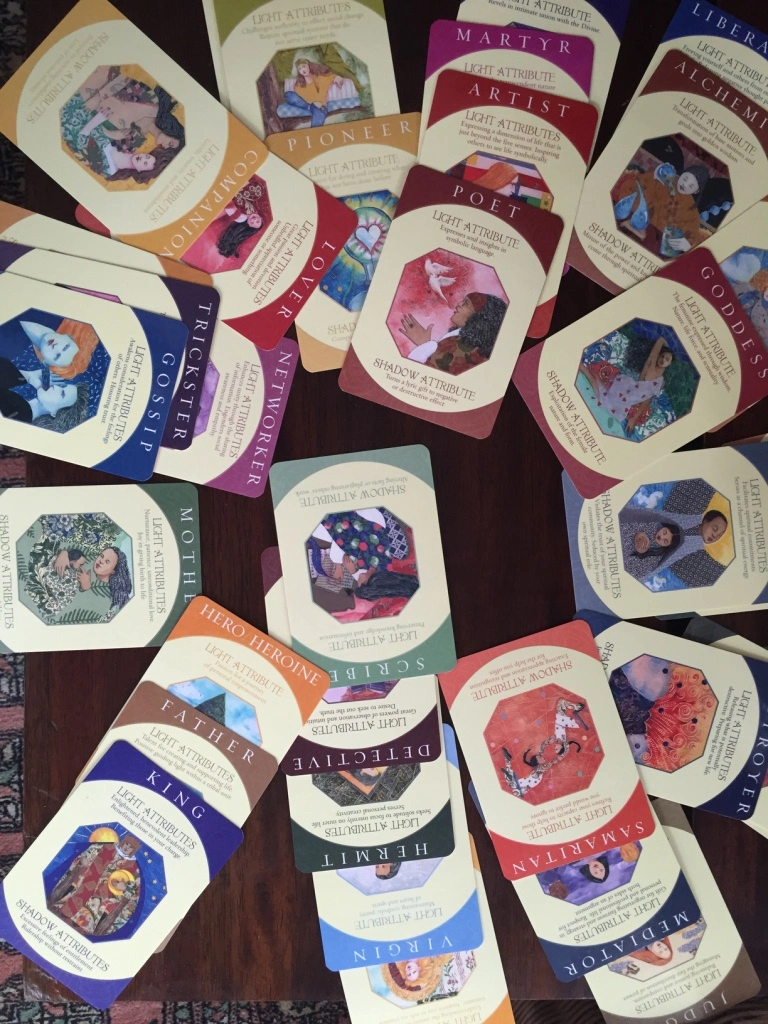
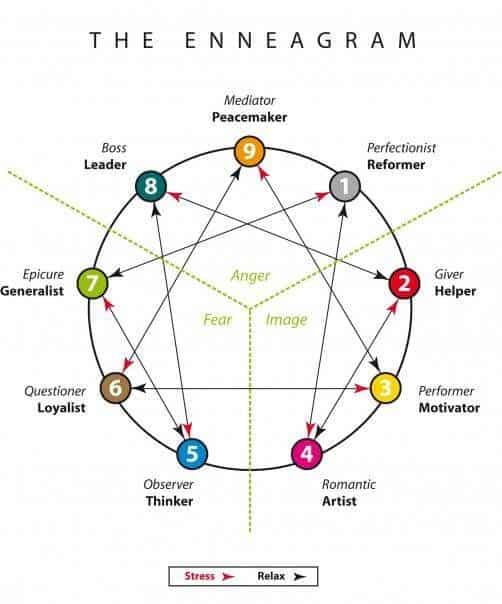
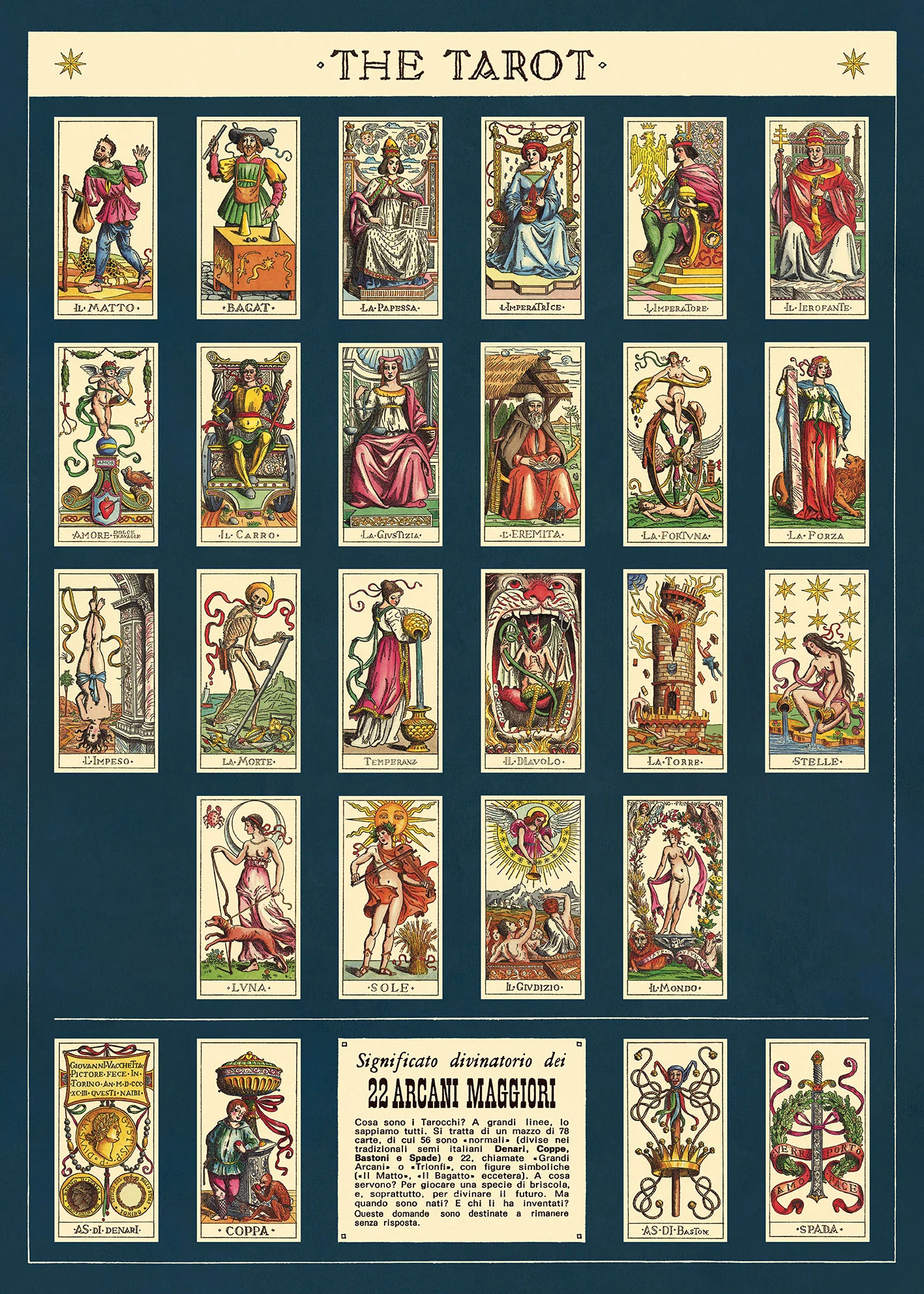




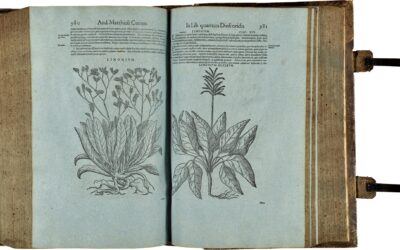

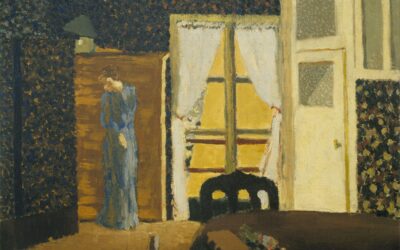
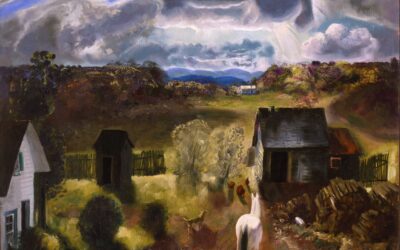
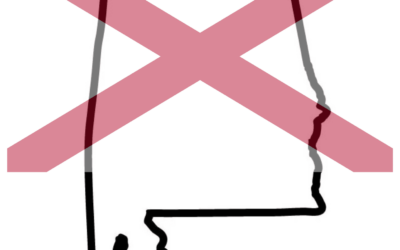
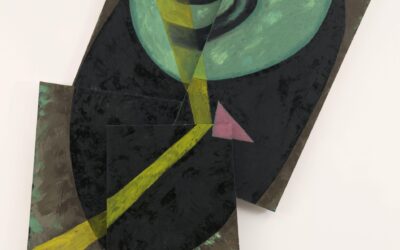
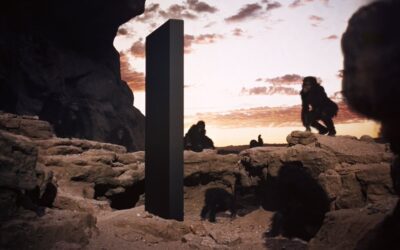
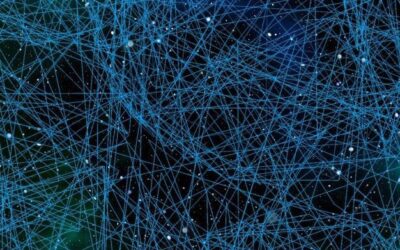
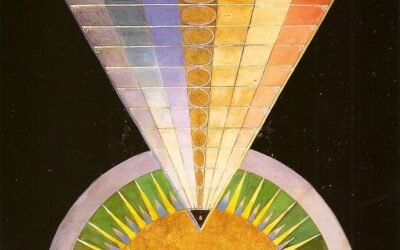


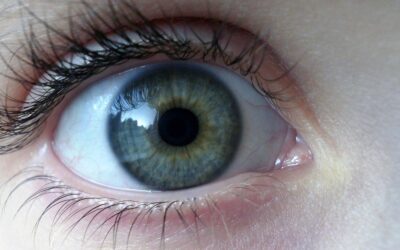


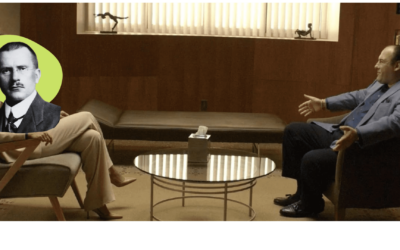


0 Comments